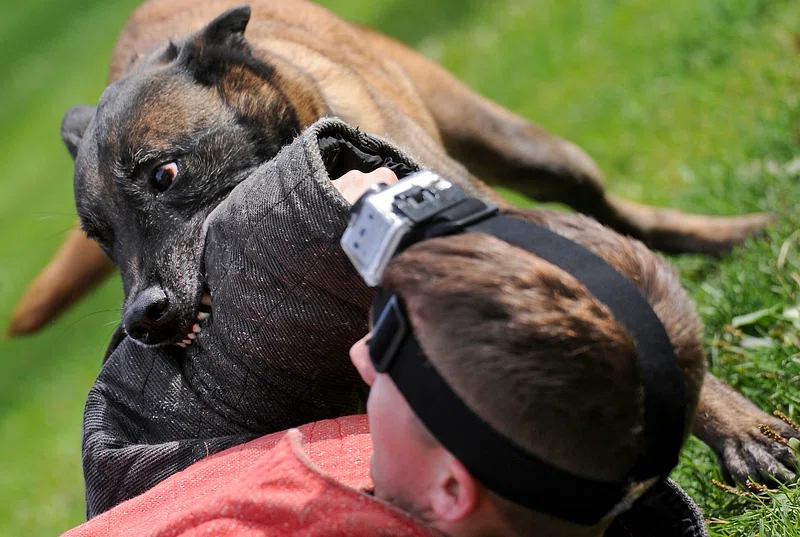How To Avoid Cutting Dog Whiskers ?

How To Avoid Cutting Dog Whiskers :- Believe it or not, those whiskers on your furry friend’s face aren’t just for show—they’re essential tools for navigating the world! While some might see them as unruly and opt for a snip during grooming sessions, those whiskers, also known as vibrissae, are the unsung heroes of your dog’s sensory arsenal.
So, what’s the scoop? Well, these coarse, lengthy whiskers aren’t just there to add flair to your pup’s look. They’re actually multi-functional wonder tools! Picture this: in low-light situations, those whiskers act like tiny guides, helping your pooch navigate with ease. But that’s not all—when your furry friend is sizing up their surroundings, those whiskers kick into gear, giving them a better sense of the objects around them.
It’s like having a built-in GPS and size detector, all rolled into one adorable package! So, next time you’re tempted to tidy up your pup’s whiskers, think again. Those little whiskers are doing big things for your furry friend, helping them explore the world one whisker at a time.
Why do Dogs Have Whiskers?
Dogs aren’t just rocking those whiskers for looks—they’re essential sensory tools that help them navigate their world with finesse. Whether your furry friend is a sleek-coated beauty or a curly-coated charmer, those whiskers are a universal feature across all breeds.

Now, let’s talk about variety! Whiskers come in all shapes and sizes, just like our furry pals. In long-haired breeds like the Lhasa Apso or Pekingese, you might find whiskers that are shorter or longer. And guess what? Whisker color can even vary based on a pup’s coat—lighter dogs, such as the American Eskimo, often rock white whiskers.
But it’s not just about looks—these whiskers are like a built-in GPS system for your furry friend. They’re packed with touch-sensitive neurons that help dogs sense their surroundings, even in tricky spots like tunnels or dense brush. Picture this: when the air bounces off an object nearby, those whiskers detect the change in vibration and send signals to your pup’s brain, helping them navigate with ease.
And let’s not forget about protection! Whiskers around the eyes, cheeks, and muzzle act as a warning system, helping dogs avoid collisions and potential injuries. Plus, those facial whiskers? They’re like a window into your pup’s emotions, framing their expressions and adding depth to their communication with you and other dogs.
But wait, there’s more! Those cheek and muzzle whiskers aren’t just for show—they help dogs gauge if they can squeeze through tight spots, like the ultimate escape artists they can be. It’s like having a built-in spatial awareness system, helping your furry friend navigate the world one whisker at a time.
So, next time you admire your pup’s whiskers, remember—they’re not just for looks. They’re the unsung heroes of your furry friend’s sensory toolkit, helping them explore, communicate, and stay safe in their world.
How To Avoid Cutting Dog Whiskers Do Whiskers Only Grow On My Dog’s Snout?
Did you know that beyond the familiar whiskers on a dog’s snout, they also sport whiskers in unexpected places? Yes, whiskers can sprout around their chin and even above their eyes! Those whiskers above the eyes aren’t just for looks; they serve a crucial role in protecting the pooch from foreign objects.

Let’s dive into the canine whisker catalog:
- Genal Whiskers: These are like the sentinels of a dog’s cheeks, aiding in their peripheral vision.
- Interramal Tufts: Situated gracefully beneath the chin, these whiskers add a touch of flair while likely helping with close-range navigation.
- Mystacial Whiskers: Found on the upper lip, these whiskers give your furry friend an air of sophistication while likely assisting in sensory exploration.
- Supraorbital Whiskers: Positioned proudly above the eyebrows, these whiskers play a protective role, helping to shield those precious peepers from unwanted intruders.
How To Avoid Cutting Dog Whiskers Can I cut my dog’s whiskers?
We strongly discourage dog owners from trimming their pet’s whiskers, unless under the guidance of a veterinarian. While some groomers might trim whiskers for cosmetic reasons, it’s not recommended. Unlike cats, dog whiskers tend to sprout in a more scattered fashion, but each serves a vital purpose and should be left intact.
Although cutting whiskers won’t cause physical pain since they lack pain receptors, it can disrupt your dog’s spatial awareness and potentially lead to confusion. This loss of sensory input might affect their ability to judge proximity to objects, impacting their confidence.
Fortunately, whiskers do grow back if trimmed, but it’s crucial to communicate with your groomer to ensure they refrain from doing so in the future. Additionally, plucking whiskers should never be attempted as it can be painful due to the abundance of nerve endings at the base.

Use a Tool of Professional Quality
When it comes to grooming your dog’s face without compromising their precious whiskers, investing in high-quality equipment is paramount. Opt for professional-grade clippers to ensure a precise and safe trimming experience. This not only safeguards your furry friend but also ensures a polished, million-dollar look without any uneven patches.
Selecting top-notch grooming clippers is your ticket to success in enhancing your pup’s appearance. Whether you’re working around the eyes or ears, having the right tools at your disposal is indispensable, especially in delicate areas like the mouth.
Equipping yourself with the proper instruments significantly reduces the risk of errors and enhances your chances of achieving a flawless groom. This is especially crucial as you delve into the art of grooming a dog’s face while preserving their whiskers.
Remember, consistency is key regardless of the dog’s coat thickness. Stick to using the same reliable tools for grooming your dog’s face, ensuring a uniform and professional finish every time.




